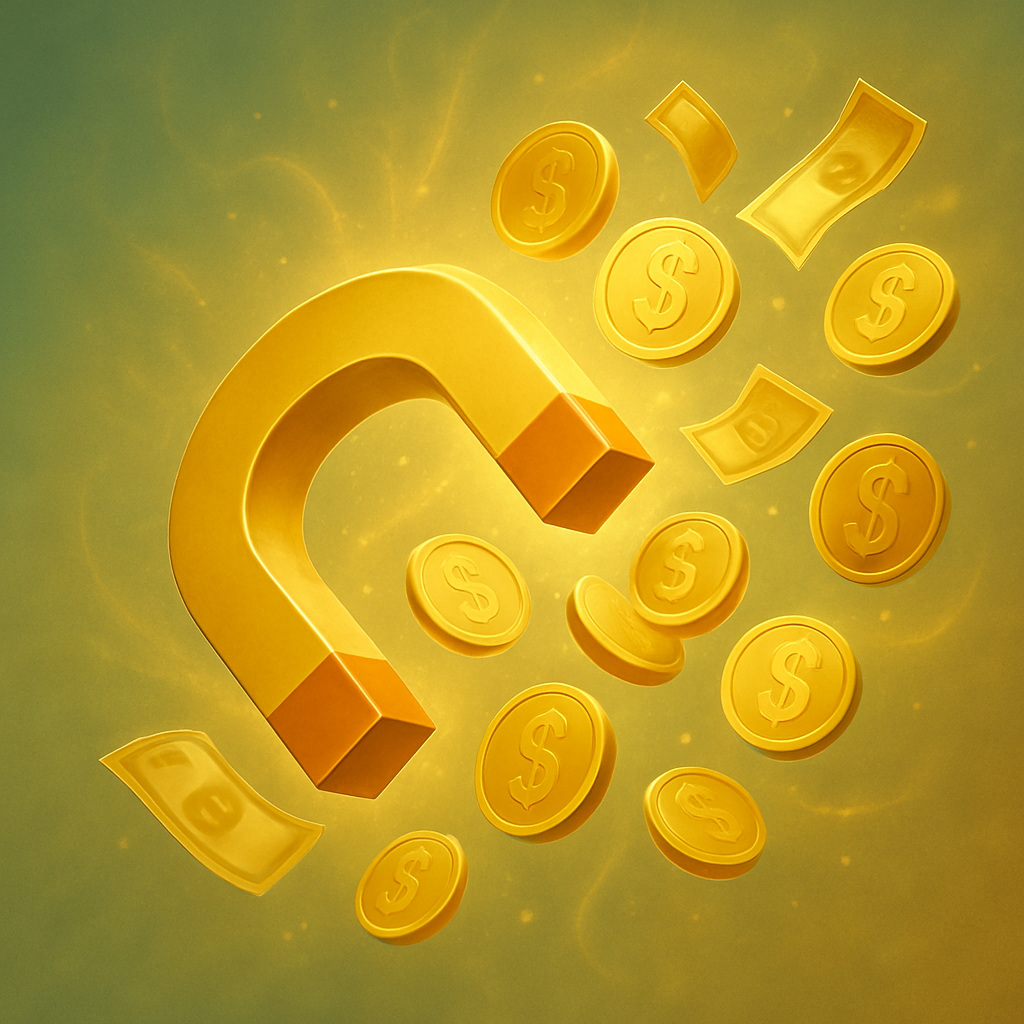
Let’s be real: the traditional “side hustle” narrative often screams burnout. Juggling a demanding 9-5, plus driving for rideshares or pulling all-nighters on a passion project? Hard pass for many of us in 2025. But what if you could generate legit extra cash without sacrificing your precious downtime, sanity, or beauty sleep? Enter the era of the “Lazy Girl” Side Hustle.
This isn’t about being unmotivated; it’s about working smarter, leveraging technology, and prioritizing efficiency. It’s about side gigs with minimal active effort, maximum automation potential, and flexible schedules that fit your life, not the other way around. Forget grinding – it’s time to embrace the art of making money work for you.
Here are 10 “Lazy Girl” approved side hustles that actually bring in real money in 2025:
1. The Pin Master (Pinterest Virtual Assistant)
- The Lazy Appeal: Work remotely, set your own hours, leverage tools for scheduling, and focus on a visually appealing platform. Once systems are set up, much can be automated.
- How it Makes Money: Businesses know Pinterest is a powerhouse for driving traffic and sales, but many lack the time or expertise. As a Pinterest VA, you:
- Create eye-catching pins (Canva is your best friend!).
- Develop keyword-rich pin descriptions.
- Schedule pins in bulk using tools like Tailwind.
- Optimize business profiles and boards.
- Analyze performance metrics.
- 2025 Angle: AI image generation tools are making unique visuals even easier. Deep understanding of Pinterest’s shopping features and Idea Pins is crucial. Focus on niches like e-commerce, bloggers, or course creators.
- Getting Started: Learn Pinterest strategy (free resources abound!), build a simple portfolio with mock-ups, offer your services on freelancing sites (Upwork, Fiverr) or network directly on Pinterest.
- Earning Potential: $15-$50+ per hour, often retainer-based ($200-$800+ per month per client).
2. The Digital Landlord (Print-on-Demand)
- The Lazy Appeal: Zero inventory! Design once (or use AI tools), upload, and let the platform handle printing, shipping, and customer service. Truly passive after setup.
- How it Makes Money: Create unique designs for t-shirts, mugs, phone cases, tote bags, etc. Upload them to platforms like Redbubble, Teespring (Spring), Society6, or Amazon Merch (if accepted). You earn a royalty on each sale.
- 2025 Angle: AI design tools (Midjourney, DALL-E 3, Canva AI) are game-changers for generating ideas and even creating base designs quickly. Focus on hyper-niche interests, trending aesthetics (like cottagecore, dark academia), or evergreen humor. Integrate with TikTok Shop or Pinterest for discovery.
- Getting Started: Choose a niche, experiment with design tools, research keywords/tags, upload consistently to multiple platforms. Patience is key!
- Earning Potential: Highly variable. $50-$500+ per month realistically for most; top sellers can make much more. It’s about volume and finding winning designs.

3. The Micro-Content Maven (Social Media Shorts & Reels Creation)
- The Lazy Appeal: Capitalize on short-form video trends. Work can be batched – film multiple clips in one session. Use templates and editing apps for speed. Minimal writing compared to long-form content.
- How it Makes Money: Businesses and creators desperately need engaging TikTok Reels, YouTube Shorts, and Instagram Reels. Offer services like:
- Scripting quick, catchy concepts.
- Filming simple B-roll or talking heads (even remotely).
- Editing using CapCut or similar apps (tons of templates!).
- Adding trending sounds and effects.
- Writing punchy captions and hashtags.
- 2025 Angle: AI tools can help generate video scripts, suggest edits, and even create basic avatar-based videos. Understanding platform-specific algorithms and AR filters is essential. Focus on quick turnaround.
- Getting Started: Master a couple of editing apps, create sample reels for fictional brands, offer packages on freelancing platforms or directly approach small businesses.
- Earning Potential: $15-$40 per reel/short, or package deals (e.g., $200 for 5 shorts).
4. The Feedback Queen (Online Surveys & User Testing)
- The Lazy Appeal: Do it from your couch, during lunch breaks, or while watching TV. Very low cognitive load. No special skills needed.
- How it Makes Money: Companies pay for consumer opinions. Platforms connect you with:
- Paid Surveys: Share your thoughts on products, ads, or services (Swagbucks, Branded Surveys, Survey Junkie – be selective!).
- User Testing: Record your screen and voice while navigating a website or app, sharing your honest feedback (UserTesting.com, Userlytics).
- Focus Groups: Occasionally participate in paid online discussions (higher pay, less frequent).
- 2025 Angle: More platforms are incorporating AI matching to find your demographic profile faster. Mobile app testing is booming. Beware of scams – stick to reputable sites.
- Getting Started: Sign up for multiple reputable platforms, complete your profile thoroughly, be consistent. Treat it like a quick daily habit.
- Earning Potential: $50-$200+ per month realistically, depending on time invested and luck with higher-paying studies. User testing pays more per task ($10-$60) but is less frequent.
5. The Affiliate Ambassador (Niche Affiliate Marketing)
- The Lazy Appeal: Promote products you already like or find interesting. Leverage existing social media or start simple (like a Pinterest page or basic blog). Earn while you sleep!
- How it Makes Money: Sign up for affiliate programs (like Amazon Associates, ShareASale, CJ Affiliate, or brand-specific programs). Share unique links. When someone clicks your link and buys, you earn a commission.
- 2025 Angle: Authenticity is key! Micro-influencers and niche content creators are winning. Focus on a specific interest (e.g., sustainable home goods, specific gaming gear, budget travel hacks). Utilize Pinterest SEO and YouTube Shorts effectively. AI can help generate content ideas.
- Getting Started: Choose a niche you’re passionate about, find relevant affiliate programs, create content (reviews, “favorites” lists, tutorials) where you naturally include your links. Build trust.
- Earning Potential: Starts slow but can scale significantly. $100-$1000+ per month is achievable with consistent effort in the right niche. Requires patience.
6. The Digital Packrat (Selling Unwanted Stuff Online)
- The Lazy Appeal: Turn clutter into cash! Minimal upfront cost (you already own it). Platforms handle payment and often shipping labels. Declutter while earning.
- How it Makes Money: Photograph and list items you no longer need or want on platforms like:
- Clothing/Accessories: Poshmark, Depop, Mercari, eBay, Vinted.
- Furniture/Home Goods: Facebook Marketplace, OfferUp, Craigslist (local pickup).
- Books/Media: Amazon Seller Central, eBay.
- Everything Else: Mercari, eBay, Facebook Marketplace.
- 2025 Angle: “Recommerce” is booming. Sustainability is a selling point. Use good lighting (a cheap ring light helps!) and keyword-rich descriptions. Offer bundle deals. Platforms like Poshmark make shipping incredibly easy.
- Getting Started: Dedicate an afternoon to gathering items, take clear photos, research comps for pricing, list consistently. Batch tasks (photograph 10 items at once).
- Earning Potential: Highly variable based on what you sell. $50-$500+ per decluttering session is common. Turn it into a habit!
7. The Chat Concierge (AI-Assisted Freelance Writing/Microtasks)
- The Lazy Appeal: Use AI tools (like ChatGPT, Claude, Gemini) as your brainstorming buddy, first-draft generator, and editor. Significantly cuts down research and writing time for short-form content.
- How it Makes Money: Offer services that leverage AI efficiency but require a human touch:
- Crafting engaging social media captions & posts.
- Writing short blog post outlines or meta descriptions.
- Proofreading and editing AI-generated drafts.
- Transcribing short audio/video clips (AI helps, but you review).
- Basic data entry or research compilation.
- 2025 Angle: Clients increasingly expect freelancers to use AI tools efficiently. The value is in your prompt engineering, editing, quality control, and adding unique personality/insight AI can’t replicate. Focus on quick-turnaround microtasks.
- Getting Started: Master prompting for your chosen AI tool. Build a portfolio of short samples. Offer services on Fiverr, Upwork, or niche microtask platforms.
- Earning Potential: $10-$30+ per task, depending on complexity. Volume is key.
8. The Remote Receptionist (Light Customer Service/Chat Support)
- The Lazy Appeal: Work from home, often flexible hours (evenings/weekends possible), structured tasks. Many roles involve primarily text-based chat or email, avoiding phone calls.
- How it Makes Money: Companies outsource basic customer service functions. Tasks might include:
- Answering simple customer inquiries via live chat or email.
- Processing basic returns or order updates.
- Moderating simple community forums.
- Providing basic tech support triage (e.g., reset passwords).
- 2025 Angle: Look for roles specifically labeled “Chat Support” or “Email Support.” Many companies use platforms that allow flexible scheduling blocks. AI handles FAQs, you handle the nuanced or escalated interactions.
- Getting Started: Polish your written communication skills. Apply directly to companies known for remote work or check platforms like Indeed, Remote.co, or FlexJobs. Highlight reliability and clear communication.
- Earning Potential: $15-$25 per hour, often part-time hours available.
9. The Course Curator (Selling Digital Templates & Resources)
- The Lazy Appeal: Create a digital product once (like a Canva template, Notion planner, spreadsheet tracker, or short guide) and sell it repeatedly with minimal ongoing effort. Platforms handle delivery and payment.
- How it Makes Money: Identify a common pain point in your area of knowledge or interest. Create a simple, valuable solution as a downloadable file. Sell it on:
- Etsy
- Gumroad
- Shopify (if building a small store)
- Your own simple website (using Carrd or similar).
- 2025 Angle: The “Tools Notion” trend is huge. People want plug-and-play solutions. Focus on aesthetics and immediate utility. Use Pinterest and TikTok to drive traffic. Offer a few freebies to build an email list.
- Getting Started: What skill or tool do you use efficiently? Can you templatize it? Create a polished product, take great mockup screenshots, write a compelling description, list it!
- Earning Potential: $5-$50+ per sale. Passive income builds over time. Start small with one great product.
10. The Cashback Sleuth (Strategic Cashback & Rewards Apps)
- The Lazy Appeal: Earn money back on purchases you were already going to make. Requires minimal extra effort – just check the app before clicking “buy.”
- How it Makes Money: Sign up for reputable cashback and rewards apps/websites. Browse their offers before shopping online or scan receipts after shopping in-store. Stack with credit card rewards for maximum effect.
- Browser Extensions: Rakuten, Honey, Capital One Shopping (automatically find coupons/cashback).
- Receipt Scanners: Fetch Rewards, Ibotta, Receipt Hog, Amazon Shopper Panel.
- Gift Card Resellers: Buy discounted gift cards for stores you frequent (Raise, CardCash).
- 2025 Angle: Apps are becoming more sophisticated with personalized offers and in-app shopping features. Focus on groceries and everyday essentials for consistent returns. This is savings turned into earnings.
- Getting Started: Download 2-3 top apps (Rakuten, Fetch, Ibotta are good starters). Make checking them a habit before online checkout and scan all receipts.
- Earning Potential: $20-$100+ per month depending on your spending. It’s “found money.”
The “Lazy Girl” Mindset: Keys to Success in 2025
- Automation is Your BFF: Use scheduling tools (Tailwind, Buffer), templates, AI assistants, and automated workflows wherever possible. Set it and (mostly) forget it.
- Consistency > Intensity: Showing up regularly, even for small tasks (listing one item a day, doing one survey, scheduling a week’s pins), compounds over time. Avoid burnout bursts.
- Leverage Your Existing Skills & Interests: Don’t start from scratch if you don’t have to. What are you already good at or knowledgeable about? Monetize that.
- Start Small, Scale Smart: Don’t try all 10 at once! Pick ONE that resonates, set up the systems efficiently, and get it running smoothly before adding another.
- Protect Your Peace: This is supposed to be low-stress. Set boundaries, track your time, and ditch any hustle that feels like a grind. It defeats the purpose!
- Embrace the Tech: AI tools, user-friendly platforms, and automation software are the engines of the “Lazy Girl” hustle. Stay curious and learn to use them effectively. Always add your unique human touch.
- Realistic Expectations: These are side hustles. While some can grow significantly, most will provide solid supplemental income, not instant riches, especially at the start. Celebrate small wins!
The Bottom Line: Smart > Hard
The “Lazy Girl” side hustle revolution in 2025 is all about rejecting the hustle culture grind and embracing intelligent, efficient ways to generate income. It’s about using technology to your advantage, monetizing your existing knowledge or assets, and creating streams that fit seamlessly into your life without draining you.
Choose one or two ideas that spark your interest, set up smart systems, prioritize consistency, and watch your bank account grow while you reclaim your time and energy. Now that’s the definition of working smarter, not harder. Go get that (effort-efficient) bag!
PSA: Always research platforms, understand fees, be aware of tax implications for your earnings, and protect your personal information. “Lazy” doesn’t mean careless!





























